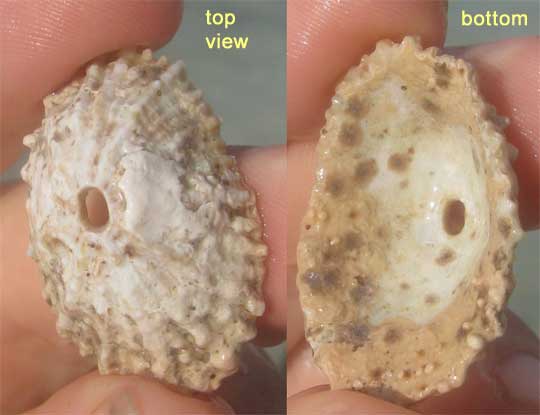Excerpts from Jim Conrad's
Naturalist Newsletter
from the July 31, 2011 Newsletter issued from Mayan Beach Garden Inn 20 kms north of Mahahual; Caribbean coastal beach and mangroves, ~N18.89°, ~W87.64°, Quintana Roo state, MÉXICO
LIMPET SHELL
Eric in New York, Sue in Cyberspace, Seth in Maine and Cotting in the Yucatán identified the prettily perched shell below as a limpet shell:

"I first became aware of them in Africa where they were so big you could cook and eat them. Great stew!" Cotting wrote. Cotting even suggested a name for our shell: the Barbados Keyhole Limpet, FISSURELLA BARBADENSIS.
Front and back views are shown below:

Limpets, now I know, are not a breed of short-legged dog, which I'd thought earlier, but rather saltwater and freshwater snails with simple shells conical in shape, and either not coiled, or appearing not coiled in the adult stage. Being snails, they're mollusks. Most limpet shells bear no crater- like hole at the shell's top, but the "keyhole limpets" do. You might enjoy an extensive page showing many keyhole limpets from across the world, including Cotting's Barbados Keyhole, here.
Keyhole limpets occur throughout the world's oceans, in most marine environments, and most species feed on their fellow sea creatures, such as bryozoans, sponges and tunicates. On the Internet a keyhole limpet expert says that the keyhole is the exit port for waste products. Limpet species with closed shell tops have an opening below the shell.